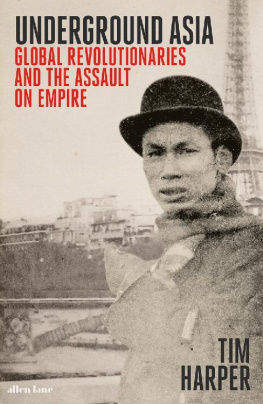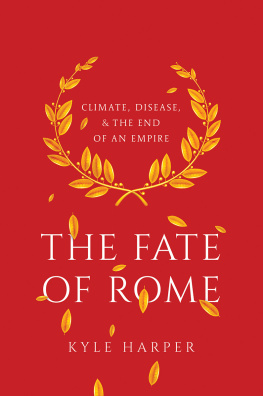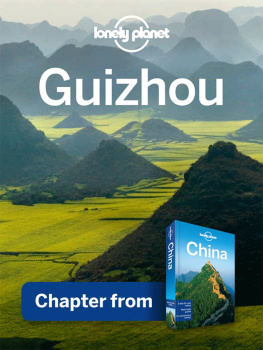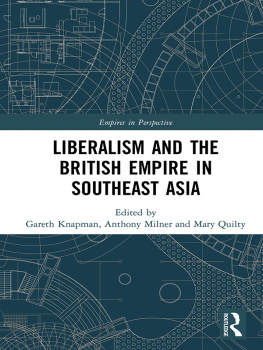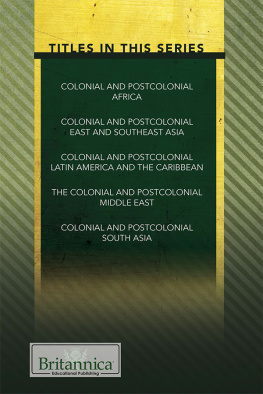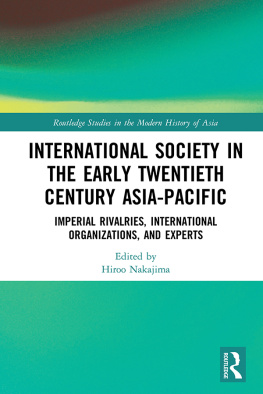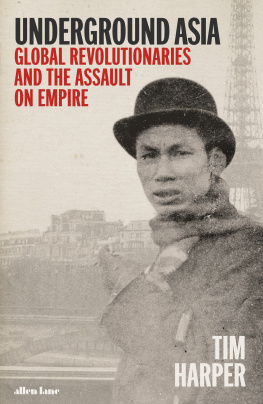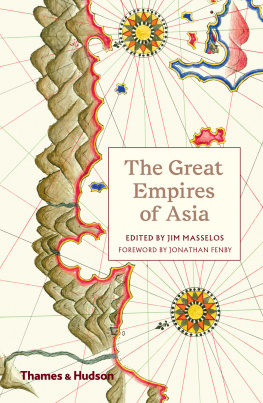
Tim Harper
UNDERGROUND ASIA
Global Revolutionaries and the Assault on Empire

Contents
About the Author
Tim Harper is Professor of the History of Southeast Asia at the University of Cambridge, a Director of the Centre for History and Economics and a Fellow of Magdalene College. He was the co-author with Christopher Bayly of two landmark Penguin books on the British Empires experience of the Second World War in South and Southeast Asia: Forgotten Armies and Forgotten Wars.
For L.
List of Illustrations and Photographic Credits
Every effort has been made to contact all copyright holders. The publishers will be pleased to amend in future editions any errors or omissions brought to their attention.
LIST OF PLATES
Ships in dry dock, Singapore, c.1896. Balean/TopFoto.
Sikh policeman, Nanjing Road, Shanghai, 1910s. Gamma-Keystone/Getty Images.
The Maniktola garden, Calcutta. Wikimedia Commons.
Khudiram Bose, 1907. Historic Collection/Alamy.
Aurobindo Ghose, 1908. Historic Collection/Alamy.
Gurdit Singh on the Komagata Maru, 1914. 914 Collection/Alamy.
Women tobacco workers, Sumatra, c. 1914, photograph originally published in the contemporary journal Deli Planters Vereeniging.
Poster for Colonial Exhibition, Semarang, 1914. Lithograph by Albert Hahn Snr. Lithograph on paper mounted on linen, 108.5 x 82.5 cm. Collection of National Gallery Singapore, image courtesy of National Heritage Board.
Funeral procession for Mewa Singh, Vancouver, 1915. Simon Fraser University Library Special Collections, Kohaly Collection.
Maulana Barakatullah and Raja Mahendra Pratap, Mesopotamia, 1915. Stiftung Bibliotheca Afghanica, Bubendorf.
Execution of rebel sepoys, Singapore, 1915. Imperial War Museum, London. IWM (Q 82506).
Henk Sneevliet, Betsy Brouwer, their sons and servants, Semarang, c. 1919. International Institute of Social History, Amsterdam (BG T2/732).
Crowds during the Congress of the Peoples of the East, Baku, 1920. RIA Novosti/Sputnik/TopFoto.
Delegates at the 2nd World Congress of the Communist International, Petrograd, 1920. SCRSS/TopFoto.
Nguyen Ai Quoc with delegates, 5th World Congress of the Comintern, Moscow, 1924. Sputnik/Alamy.
Sarekat Islam meeting, Kaliwoengoe, Java, 1921. Nationaal Museum van Wereldculturen, Leiden (Coll. No. TM-60009089) .
Painted textile depicting the arrest, trial and execution of a group of Javanese, Central Java, c. 1920-30s. Nationaal Museum van Wereldculturen, Leiden (Coll. No. TM-5910-1).
The Prince of Wales and Chinese community leaders, Singapore, 1922. Courtesy of National Archives of Singapore, Peng Song Toh Collection.
Anti-Japanese patriotic demonstration, Shanghai, 1922. Bettmann/Corbis/Getty Images.
Asian Delegates at the Comintern Congress, Moscow, 1922. International Institute of Social History, Amsterdam (BG A60/622).
The anarchist group, Singapore, c. 1924. Archives Nationales dOutre Mer, Aix-en-Provence (File/Fond, Indochine, GG, 65533).
Seating plan for dinner at the Hotel Victoria, Canton, 1924. Archives Nationales dOutre Mer, Aix-en-Provence (File/Fond, Indochine, GG, 65533).
Vietnamese students and Whampoa cadets at the tomb of Pham Hong Thai, c. 1925. Archives Nationales dOutre Mer, Aix-en-Provence (File/Fond, Indochine, GG, 65533).
Shamian island in the wake of Pham Hong Thais bomb, Canton, 1924. Archives Nationales dOutre Mer, Aix-en-Provence (File/Fond, Indochine, GG, 65533).
The bicycle party, Canton, c. late 1924. Archives Nationales dOutre Mer, Aix-en-Provence (File/Fond, HCI, SPCE, 365).
).
).
Students salute the cortege of Sun Yat-sen, Beijing, 1925. Photograph by Sidney D. Gamble. Duke University Libraries, Sidney Gamble Collection.
).
The British Bund, Hankou, 1927. PA Images.
Xiang Jingyu, 1928. Source unknown.
Mas Marco Kartodikromo and his wife in Boven Digoel, 1932. Leiden University Libraries, Royal Netherlands Institute of Southeast Asian and Caribbean Studies (KITLV 4452).
Tan Malaka, 1932. Harry A. Poeze, Tan Malaka: Strijder voor Indonesis Vrijheid: Levens-loop van 1897 tot 1945, s-Gravenhage, Nijhoff, 1976, p. 426.
ILLUSTRATIONS IN THE TEXT
Nguyen Ai Quoc in Paris. Archives nationales doutre-mer, Aix-en-Provence (File/Fond, HCI, SPCE, 364).
Pham Hong Thai, 1924. Archives nationales doutre-mer, Aix-en-Provence (File/Fond, Indochine, GG, 65533).
Phan Boi Chau, Prince Cuong De and Phan Chu Trinh in Japan, 1906. Archives nationales doutre-mer, Aix-en-Provence (File/Fond, INDO, RSTNF, 6661).
An Act of Banishment: Page from a Criminal Registry, Singapore, 1914. The National Archives, Kew (TNA, CO 273/420).
Madame Cama in Stuttgart, 1907. International Institute of Social History, Amsterdam (BG B9/835).
The viceroys State Entry into Delhi, 23 December 1912, illustration from La Tribuna Illustrata, January 1913. Look and Learn/Bridgeman Images.
Bhagwan Singh with a samurai sword, Yokohama, 1914. Courtesy of Surinder Pal Singh and the South Asian American Digital Archive.
Ibrahim gelar Datuk Tan Malaka, c. 1922. Leiden University Libraries, Royal Netherlands Institute of Southeast Asian and Caribbean Studies (KITLV 17800).
At the gateway to India: Raja Mahendra Pratap in Afghanistan, 1915. Stiftung Bibliotheca Afghanica, Bubendorf.
M.N. Roy in Mexico. Photograph reproduced in Sibnarayan Ray, Selected Works of M.N. Roy: 1917-1922 , OUP, 1987.
Mas Marco Kartodikromo and his wife, abroad, c. 1920. Leiden University Libraries, Royal Netherlands Institute of Southeast Asian and Caribbean Studies (KITLV 4451).
Calling card of Nguyen Ai Quoc. Archives nationales doutre-mer, Aix-en-Provence (File/Fond, HCI, SPCE, 365).
The Great World, Shanghai, photograph by Jack Birns, 1940s. The LIFE Picture Collection/Getty Images.
Front cover of pamphlet by Tan Malaka, Indonezija i ee mesto na probudajuemsja vostoke (Indonesia and its Place in the Awakening East), 1924. International Institute of Social History, Amsterdam (1992/3905).
Wong Sang, the bobbed-haired woman. Archives nationales doutre-mer, Aix-en-Provence (File/Fond, Indochine, GG, 65533).
Chiang Kai-shek enters Shanghai, April 1927. SZ Photo/Scherl/Mary Evans.
The abandoned typewriter of Nguyen Ai Quoc, Kowloon, 1931. Archives nationales doutre-mer, Aix-en-Provence (File/Fond, HCI, SPCE, 365).
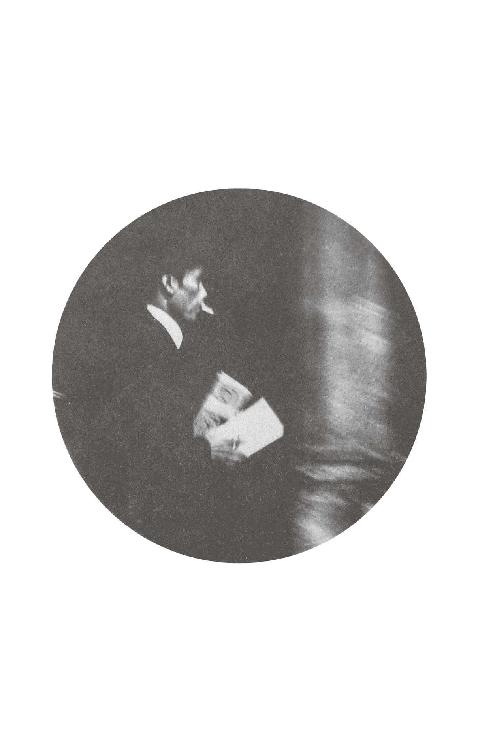
Maps
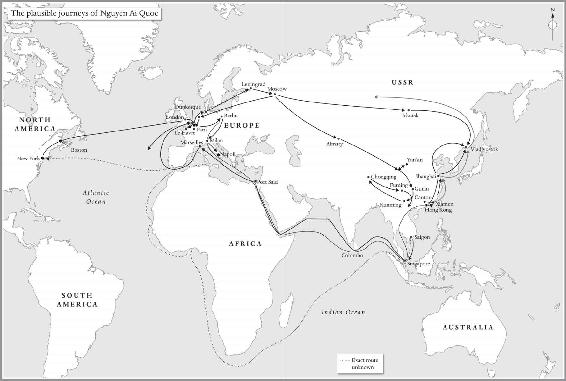
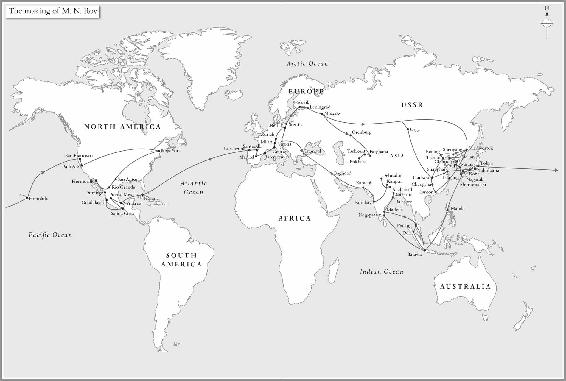
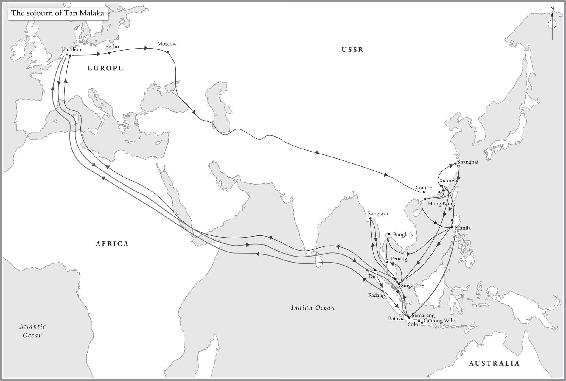 Next page
Next page
